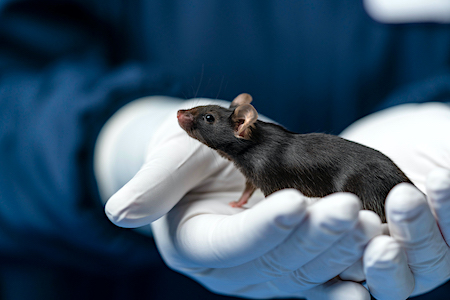 The word rodent is derived from the Latin word rodere, which means "to gnaw". This process of gnawing brings to light common dental maladies that are of paramount importance to animal welfare. One specific condition is called malocclusion, which is caused by the misalignment of the incisors and may involve overgrowth of the molars or cheek teeth. If untreated, teeth will overgrow and prevent the rodent from eating properly.
The word rodent is derived from the Latin word rodere, which means "to gnaw". This process of gnawing brings to light common dental maladies that are of paramount importance to animal welfare. One specific condition is called malocclusion, which is caused by the misalignment of the incisors and may involve overgrowth of the molars or cheek teeth. If untreated, teeth will overgrow and prevent the rodent from eating properly.
How Does Malocclusion Develop?
Malocclusion may be classified as either traumatic or atraumatic. Traumatic malocclusion may be caused by environmental factors or injury from a fractured tooth. Atraumatic malocclusion can be caused by hereditary factors such as craniofacial malformation or metabolic disorders which result in nutritional deficiencies and abnormal tooth development. Rodent incisors are considered auricular hypsodonts because the teeth are open rooted and will continue to grow from birth. When properly aligned, the teeth will wear naturally with normal chewing and gnawing activities.Diagnosis of Malocclusion
Malocclusion can be diagnosed by visually inspecting the teeth. Visual examination of the lower incisors (mandibular incisors) should show that these teeth are longer than the upper incisors (maxillary incisors). When the upper and lower incisors are in correct alignment, they will wear down naturally. The tooth enamel, located on the front of the tooth (buccal surface), is naturally a dark yellow color giving the surface a tea-stained appearance. However, the back of the tooth, known as the lingual surface, is comprised of dentine which is softer than the enamel layer. As the animal gnaws, this composition of differing surface durabilities enables the teeth to maintain a chisel-shaped edge.Problems with Untreated Malocclusion
Key signs of malocclusion include runting and weight loss. In cases of severe malocclusion, the incisors may continue to elongate and pierce the palate. When malocclusion is present and teeth are misaligned and overgrown, the animal is unable to wear the teeth down adequately with daily chewing and gnawing behaviors. This prevents the animal from obtaining nutrients from their feed and water, resulting in malnutrition, dehydration, and potentially starvation.Preventing and Treating Malocclusion
Rodent chow is formulated to be firm enough to aid in the natural wear of the incisors, thus preventing tooth overgrowth in healthy aligned teeth. Chew sticks and nyla bones can be added for additional enrichment to aide with the natural desire to gnaw.Detailed clinical checks and identification of malocclusion are an integral aspect of animal welfare. When mice and rats have a healthy dentition, they able to manage the length of the teeth with normal chewing activities. Treatment of malocclusion, when warranted, often involves trimming the incisors. However, when considering any treatment for malocclusion, it is important to consider the cause of the condition. For example, hereditary malformation or injury resulting in rapid growth that may require continuous trimming. Prompt identification and management of animals exhibiting malocclusion is an integral aspect of both animal welfare and in the maintenance of the health of your research colony.
















.jpg)

.jpg)
.jpg)
.jpg)
.jpg)





.jpg)


.jpg)
.jpg)




.jpg)




.jpg)

.jpg)



